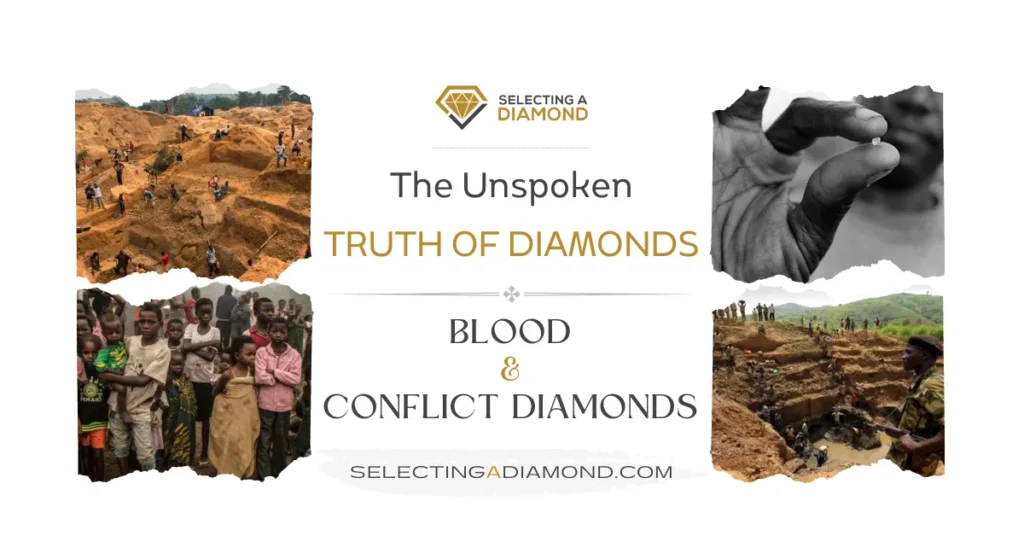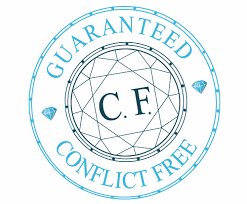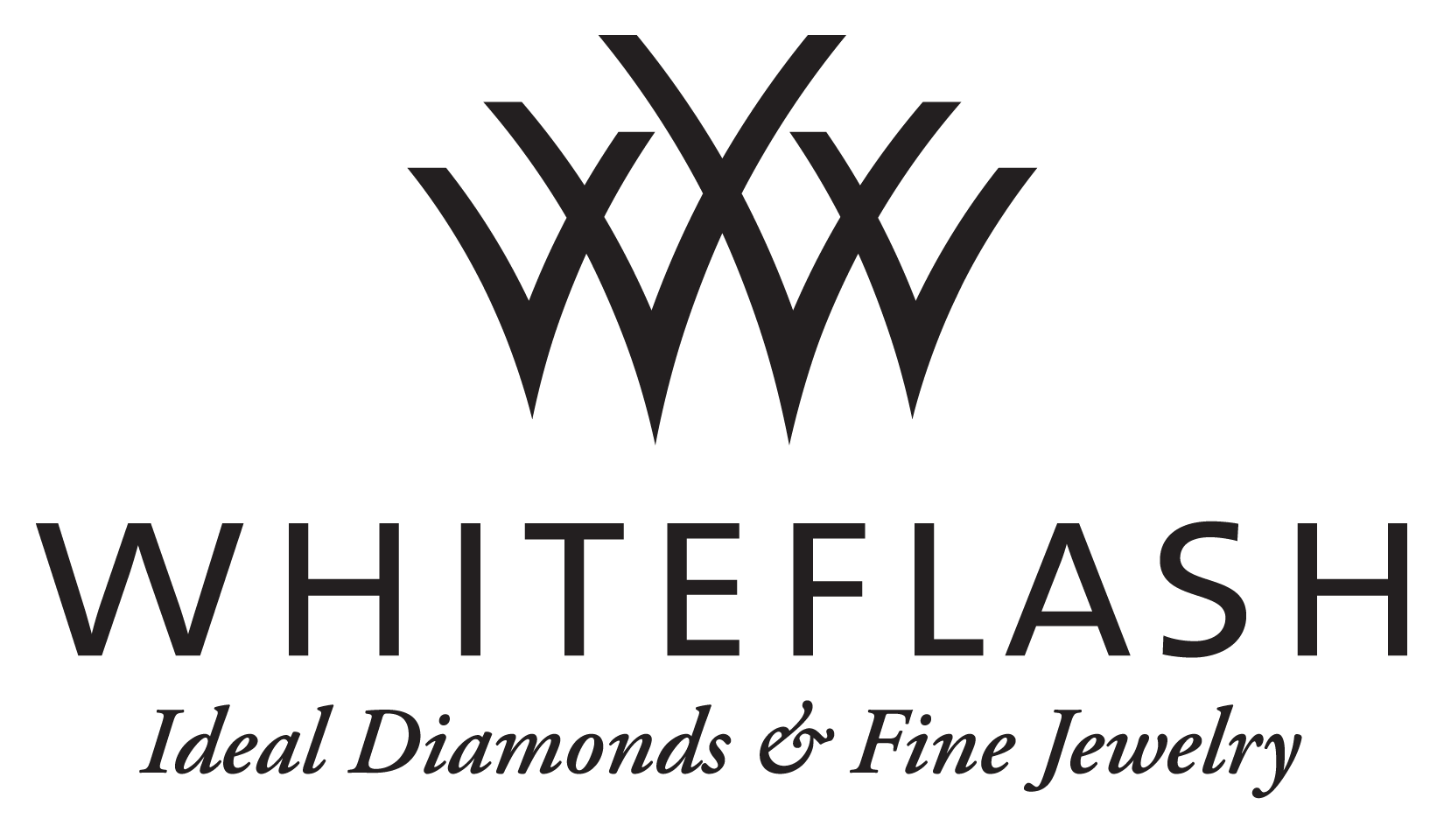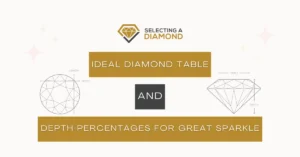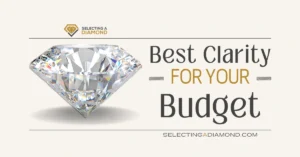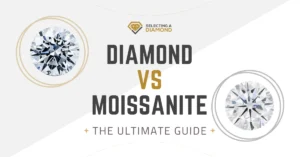We may earn a commission when you purchase through our affiliate links, at no extra cost to you. This helps support our work and allows us to continue providing unbiased, expert diamond advice.
Diamonds – their allure is undeniable, but like many precious gems, they can sometimes be tainted by their source. Originating from conflict-ridden regions or procured under unethical circumstances, these “blood diamonds” cast a shadow on the brilliance of this rare mineral. As consumers, it’s crucial that we distance ourselves from such practices.
Whether you’re wandering the aisles of a prominent local diamond retailer, well-stocked with respected certifications like GIA, AGS, or IGI, or scrolling through the digital displays of major online stores like James Allen or Whiteflash, you can breathe a sigh of relief. These retailers engage only with sources that provide conflict-free diamonds.
However, is this the rule or just an exception? Sadly, it’s not always the case.
What is Diamond Greenwashing?
Greenwashing is a term coined to describe a marketing strategy that paints an eco-friendly facade on a product, regardless of its actual environmental impact. The item is flaunted as “green,” a label it often only partially deserves, if at all.
This dubious practice is thriving within the diamond industry. Numerous companies advertise themselves as “conflict-free,” co-opting the jewelry equivalent of “green” status, when in reality, there’s little distinction in their offerings. As I’ll clarify later, any diamond bought from a reputable jeweler with a stated Conflict Diamond Policy can be considered conflict-free.
Essentially, greenwashing is a marketing ploy where companies prioritize appearing green more than implementing environmentally friendly practices.
This phenomenon is reflected in the diamond industry as well. Certain companies focus on advertising their conflict-free diamonds as if it’s an exclusive benefit they offer, thereby falling into a greenwashing pattern.
The Involvement of Human Rights Organizations
In the late 1990s, human rights organizations started raising red flags over “conflict diamonds” or “blood diamonds.” These terms describe diamonds procured from regions known to fuel violence or corruption through diamond trade proceeds.
Countries like Angola, Liberia, Congo, and Sierra Leone were deeply entwined in the export of these conflict diamonds. At its peak, the trade of these tainted gems accounted for roughly 4% of the global diamond market. It’s a grim reality that lurks beneath the sparkle of these beautiful stones.
Blood Diamond – The Movie
However, the concept of conflict diamonds can feel somewhat outdated. The clamor around blood diamonds, which notably influenced the major motion picture “Blood Diamond” with Leonardo DiCaprio (2006), mainly relates back to the tumultuous era of the 80s and 90s. In these unsettling times, diamonds were the primary currency that fueled wars in volatile African economies.
During this grim period, both warlords and corrupt administrations were buoyed by the illicit diamond trade, effectively flooding the markets with stones that often ended up as jewelry adorning the oblivious middle-class westerners who either turned a blind eye or were kept in the dark about their origin.
The UN & Kimberley Process
Confronting this bleak reality head-on, the United Nations launched the Kimberley Process in 2000, implementing a set of ethical guidelines for the global diamond trade. Through this process, which remains active today, member countries are obliged to ensure that all exported diamonds are conflict-free.
In 2001, the United States enacted the Clean Diamond Trade Act, formally adopting the Kimberley Process and prohibiting the import of conflict diamonds. These actions effectively slashed the flow of funds from conflict diamonds from 4% to a mere 1%.
Problem solved, you might think. But it’s unfortunately not quite that straightforward. A number of diamond retailers today charge a premium for what are labelled “conflict-free” diamonds.
These diamonds are marketed as ethically superior to their “blood” diamond counterparts, on the grounds that they’re not sourced from war-ravaged regions where diamond profits have funded violent insurgencies.
As a Consumer, What Should I Do?
So, what steps can you, a responsible consumer, take to ensure you’re not inadvertently buying conflict diamonds? The surprising answer is – none. Conflict diamonds have largely disappeared from the market. In fact, finding a blood diamond today would be quite a challenge, even if you were deliberately seeking one.
As a mindful shopper, there’s no need to fret about inadvertently contributing to violence and atrocities when choosing a diamond. As long as you purchase from trustworthy jewelers like James Allen or Blue Nile, you can confidently buy knowing your diamond is conflict-free.
Read our Full Review & Comparison between James Allen Vs. Blue Nile
If you have any lingering doubts or queries, feel free to ask the jeweler to share their conflict diamond policy. For instance, you can peruse Blue Nile’s conflict diamond policy, or the James Allen policy.
Price Difference for Branding “Conflict-Free”
Generally-speaking, shopping from brands that market themselves as “Conflict-free” all over their website & marketing materials isn’t “usually” to your side.
Wondering about the cost disparity?
The additional price levied by “conflict-free” diamond companies in the name of ethics may astonish you. A side-by-side comparison of one of the leading conflict-free diamond companies and James Allen – a jeweler that doesn’t explicitly market themselves as conflict-free, but has a transparent policy – reveals a staggering price difference of up to 33%.
This suggests that consumers are paying up to a third more for the peace of mind associated with buying an ethically sourced diamond.
Summary
Summing up, when hunting for a conflict-free diamond:
- Ensure to always buy from a reputable jeweler, whether online or in a brick-and-mortar store.
- Never hesitate to ask your jeweler for a clear policy on conflict-free diamonds that ensures all diamonds sold comply with the Kimberley Process.
- Understand that there’s no need to pay more for a conflict-free diamond at companies that “brags” about going beyond Conflict-Free. The sparkle of an ethically-sourced diamond needn’t cost you extra.
Still not sure where to buy your diamond?
We always recommend shopping diamonds online and created a Full guide to shop diamonds like a Pro.
Among online retailers, here are our favorite stores click their logo to visit store
-
James Allen:
Our favorite online store, best diamond imaging technology available today, comes with the largest collection with more than half a million loose diamonds.
-
Blue Nile:
Widest collection of loose diamonds of all sizes, great imaging technology for most of their inventory (hundreds of thousands of diamonds), great customer support.
-
Whiteflash:
Home Of A CUT ABOVE® Super Ideal Diamonds, they stand out from the crowd by offering premium diamonds cuts, tailored to those who love the details, at great prices too.

